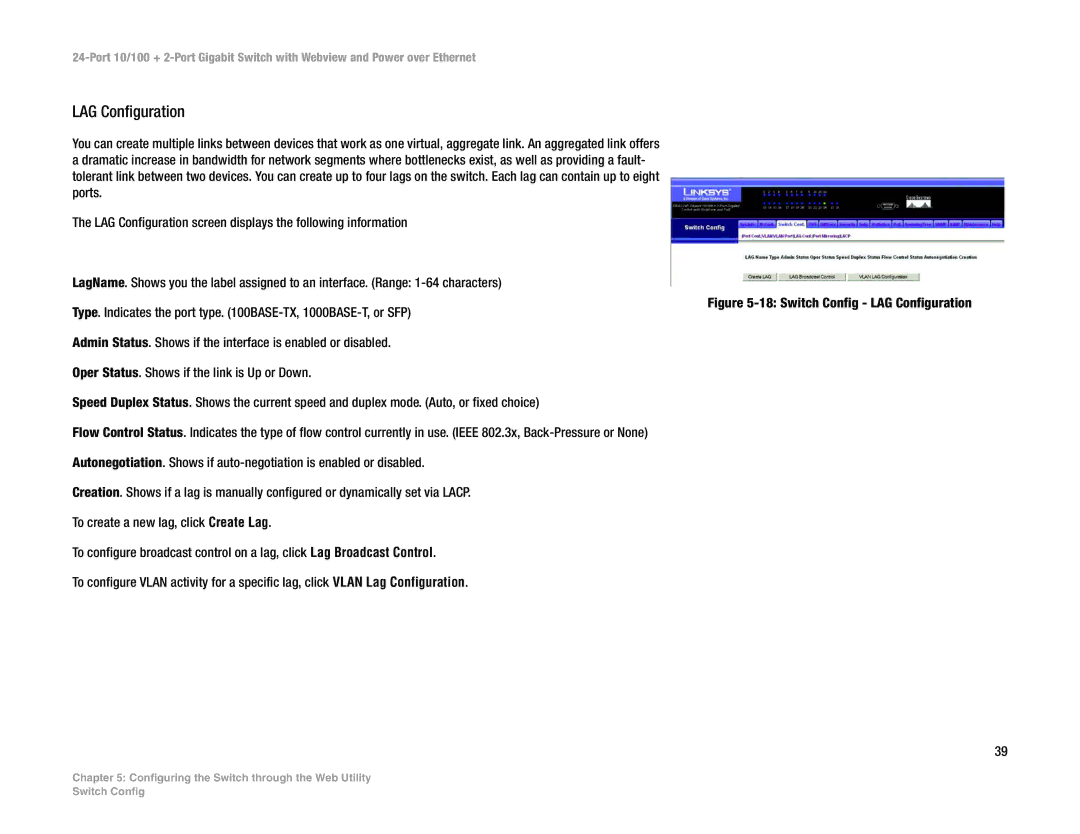SRW224P specifications
The Linksys SRW224P is a versatile and efficient managed switch that caters to the needs of small to medium-sized businesses. This Layer 2 switch stands out with its robust functionality and user-friendly design, making it an ideal choice for networking professionals looking to enhance their network infrastructure.One of the standout features of the SRW224P is its 24 Gigabit Ethernet ports, which provide high-speed connectivity for various devices across the network. This is particularly beneficial in environments with bandwidth-hungry applications, such as data transfers, video conferencing, and online collaboration tools. Additionally, the switch comes with 2 dual-personality ports that can be used as either Gigabit Ethernet or SFP (Small Form-factor Pluggable) ports, allowing for flexible and scalable network setups.
Power over Ethernet (PoE) capability is another significant aspect of the SRW224P. With a total PoE output of up to 370 watts, the switch can power devices such as IP cameras, VoIP phones, and wireless access points directly through the Ethernet cable, simplifying the installation process and reducing cable clutter. This feature is particularly advantageous for organizations seeking to deploy network devices in areas where power outlets are limited.
The SRW224P also boasts advanced management features, including VLAN support for segmenting network traffic, Quality of Service (QoS) for prioritizing critical applications, and Spanning Tree Protocol (STP) for redundant network paths. These capabilities enhance network performance and reliability, ensuring that users experience minimal downtime and efficient data flow.
Security is a top priority with the SRW224P, which includes features such as port security, access control lists (ACLs), and DHCP snooping. These measures help protect the network from unauthorized access and potential attacks, safeguarding sensitive information and maintaining operational integrity.
In terms of user interface, the Linksys SRW224P is equipped with a web-based management interface that allows for easy configuration and monitoring. This intuitive interface enables IT administrators to manage the switch remotely, providing real-time insights into network performance and facilitating troubleshooting.
Overall, the Linksys SRW224P managed switch combines high performance, advanced features, and security measures that make it a reliable choice for businesses aiming to optimize their network infrastructure. Its PoE capabilities, extensive port options, and management features ensure that it meets the demands of modern networking environments, making it a valuable asset for any organization.

